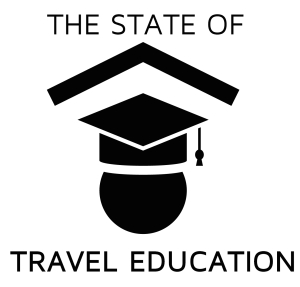Skift Take
There's no doubt that commercial space travel will continue seeing progress over the next decade, and if traveling from one end of the world to the other can be done faster and still be safe, let's do it. At the same time, universities shouldn't lose sight of traditional aircraft challenges that need to be addressed.
Before commercial space travel can get big, it will need to get more pilots in aircraft cockpits, and university’s are responding to the need by creating programs to get students pointed in the right direction.
Americans are intrigued by space travel and millions expect to have space-traveled around low Earth orbit by 2020. The opportunity to get lofty views of Earth is what most travelers probably anticipate with space travel, but universities and aircraft manufacturers focus on more practical uses for soaring above the atmosphere, namely making air travel faster.
Dr. Richard Heist, the chief academic officer of Embry-Riddle Aeronautical University’s Daytona Beach, Fla. campus, says the school put a heavy focus on preparing students for commercial space travel in the past three years. He says the school readies students for future aircraft making it possible to travel between New York and Singapore in just three hours, for example.
“One reason for this is in the last four to five years NASA pulled back from controlling all space operations and now other companies like XCOR and SpaceX are moving into supplying the industry,” said Heist. “But commercial customers are what will make it work, and eventually we’ll be carrying people where they want to be faster using these new engines.”
The commercial space operations degree is the fastest-growing on campus, says Dr. Tim Brady, dean of the university’s College of Aviation. Since the program’s inception in 2013, 80 students declared the major, and only 15 to 20 were expected by this point. Brady notes many students declaring the major are students transferring from another major.
Commercial space travel is currently accessible for the very wealthy, Brady said, and he portends transcontinental space travel being possible within five years as well as the prospect of horizontal takeoff and landing.
“Space shuttles didn’t have any power once they left space, so the evolution of that for commercial space will be to have power rather than using a glider,” said Brady. “It will be difficult to attract passengers to this type of travel without power.”
Curriculum Changes
The biggest challenge aviation students prepare for doesn’t relate to aircraft or the tech. they’re equipped with. It’s more connected to students’ wallets, says Brady.
“Entering pay for these students is still very low, in the low $20Ks,” said Brady. “They spend a lot of time and money on flight training and now they need to pay that back. The airlines need to start addressing this.”
Students at Embry-Riddle help develop the NexGen airspace system with the Federal Aviation Administration (FAA), aimed at switching from ground-based radar systems to GPS-based systems.
“This technology will help the entire aviation industry deal with the increased load factor of aircraft, and NextGen is a key to making this happen by 2024,” said Heist.
Student pilots must now complete a total of 1,000 flight training hours to graduate from the program. Congress increased the number of hours required to sit in the right seat of the cockpit last year, making the new requirement 1,500 hours.
Before the change, Embry-Riddle graduates could enter a cockpit with 250 hours and usually graduated with 350 hours. Heist says the school employs many graduates as flight instructors to help them gain additional hours and meet the requirement to become a pilot.
Automatic dependent surveillance broadcast (ADSB), flight information for aircraft locations and info. that could come through satellites, is another new fixture in classrooms in the last 10 years, said Brady. The system is also used for tracking weather.
Off the commercial path, the unmanned aerial vehicle (UAV) systems program, including drones, sees “rapid growth” at the school.
“We prepare pilots for the loop flying machine, in which someone in the U.S. is flying a UAV overseas,” said Brady. “The engineering college prepares students for autonomous machines with no pilots, and both will continue being popular.”
At Eastern Michigan University, a badging program is in place, mandating all students be screened and badged. This procedure was incorporated within the last five years to maintain pace with Transportation Security Administration (TSA) guidelines on aircraft security.
“This helps our students feel more professional, and it’s part of their progress to becoming fully-licensed pilots,” said Tom Trumbull, president of Suburban Aviation, who runs the university’s flight training program.
The Daily Newsletter
Our daily coverage of the global travel industry. Written by editors and analysts from across Skift’s brands.
Have a confidential tip for Skift? Get in touch
Tags: aviation, travel education
Photo credit: Virgin Galactic's SpaceShipTwo over Mojave, Calif. 104171 / 104171
